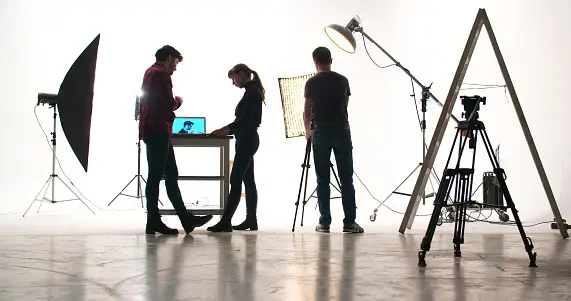Understanding the Technical Aspects of Photography

Photography combines art and science, with technical proficiency as the backbone of capturing stunning visuals. Whether you’re a beginner eager to delve deeper or a seasoned professional aiming to refine your skills, understanding the technical aspects of photography is crucial. This foundational knowledge enables photographers to manipulate their equipment and environment to produce images that not only capture reality but also evoke emotion and tell compelling stories.
Enrolling in a respected photography course can dramatically enhance your knowledge and ability to manipulate camera settings for optimal results. This comprehensive guide explores essential technical skills and settings fundamental in transforming photography from simple snapshots to professional-quality images.
Mastering Exposure and Metering
Exposure is the cornerstone of photography, determining how light or dark an image appears based on the amount of light captured by the camera’s sensor. Metering is how a camera measures this light and suggests optimal exposure settings. To master exposure, photographers must understand the relationship between ISO, aperture, and shutter speed—often called the exposure triangle.
Effective metering techniques, such as spot metering or evaluative metering, help photographers make informed adjustments to exposure based on their lighting conditions and creative intentions. By learning to control these elements, photographers can ensure their images are never too bright (overexposed) or too dark (underexposed), no matter the external conditions.
Understanding Shutter Speed and Aperture
Shutter speed and aperture are critical components of the exposure triangle and greatly influence photos’ aesthetic quality. Shutter speed, which measures the duration the camera’s shutter is open, affects the clarity of moving objects in the image. Fast shutter speeds can freeze motion, while slower speeds can create a blur, capturing the sense of motion. On the other hand, aperture refers to the size of the lens opening when an image is taken. It controls the depth of field in an image—the range of distance within the photo that appears acceptably sharp.
A wider aperture (a lower f-number) results in a shallow depth of field, which is good for portraits where the subject stands out from the background. Conversely, a smaller aperture (a higher f-number) increases the depth of field, keeping more of the scene in focus, which is perfect for landscape photography.
The Importance of ISO in Photography
ISO is the camera sensor’s sensitivity to light. It is pivotal in how well an image can be captured under varying lighting conditions. A lower ISO setting is typically used in bright conditions to prevent overexposure, while a higher ISO can be crucial in low-light scenarios. However, increasing ISO also increases the grain or noise in an image, which can affect image quality.
Understanding when and how to adjust ISO settings is essential for maintaining image clarity while adapting to different lighting situations without relying solely on aperture and shutter speed adjustments.
Advanced Camera Settings for Professional Results
Beyond the basics, advanced camera settings like white balance, autofocus points, and exposure compensation can significantly enhance photographic results. White balance helps adjust the camera to correctly represent color perceived by the human eye under different lighting conditions. Autofocus points increase the accuracy of focusing on subjects, particularly in action shots or portraits. Exposure compensation allows photographers to override the camera’s auto-exposure, giving more control over the final image’s brightness.
Mastering these settings through a dedicated photography course can lead to more professional results, providing photographers with the tools to fine-tune their photos to match their artistic vision.
Leveraging Filters and Accessories
Filters and camera accessories are invaluable tools that transform an ordinary shot into a professional-grade photograph. Polarizing filters can enhance skies and reduce reflections, while neutral density filters allow longer exposure times without overexposure, perfect for capturing motion in brighter conditions. Tripods, external flashes, and remote shutter releases can help stabilize the camera, manage lighting conditions, and capture sharp images in challenging scenarios.
Learning how to use these instruments effectively can open up a more comprehensive range of creative possibilities and enhance the technical quality of photographs.
Exploring the Dynamic Range and Its Impact on Photography
Dynamic range, a crucial technical aspect in photography, refers to the range of light levels a camera’s sensor can capture between the darkest and brightest areas of an image. Understanding and effectively managing dynamic range is essential for producing photographs that closely resemble what the human eye perceives in light and color. Cameras with a higher dynamic range can catch greater details in shadows and highlights, which is particularly important in high-contrast situations like shooting a bright sky against a dark landscape.
In practical photography, managing dynamic range involves bracketing exposures to merge them into a single High Dynamic Range (HDR) image. This process allows photographers to combine several photos taken at different exposures to create a composite that represents a more balanced exposure across the entire scene. Graduated neutral density filters can aid in balancing the exposure in-camera by reducing the light entering the lens from the brighter part of the scene without affecting the darker areas.
Photography courses that cover advanced camera handling will often teach how to optimize dynamic range through both in-camera settings and post-processing techniques. Learning to harness the full potential of your camera’s dynamic range can dramatically enhance the quality of your photos, providing clarity and detail that makes your images stand out. This skill is precious in landscape and outdoor photography, where natural lighting conditions vary between extremes.
Each element is crucial in capturing outstanding images, from mastering the exposure triangle to leveraging advanced camera settings and accessories. By enrolling in a reputable online photography course, photographers of all levels can gain the knowledge and confidence needed to explore and excel in various photographic techniques, paving the way for professional growth and success in photography.



